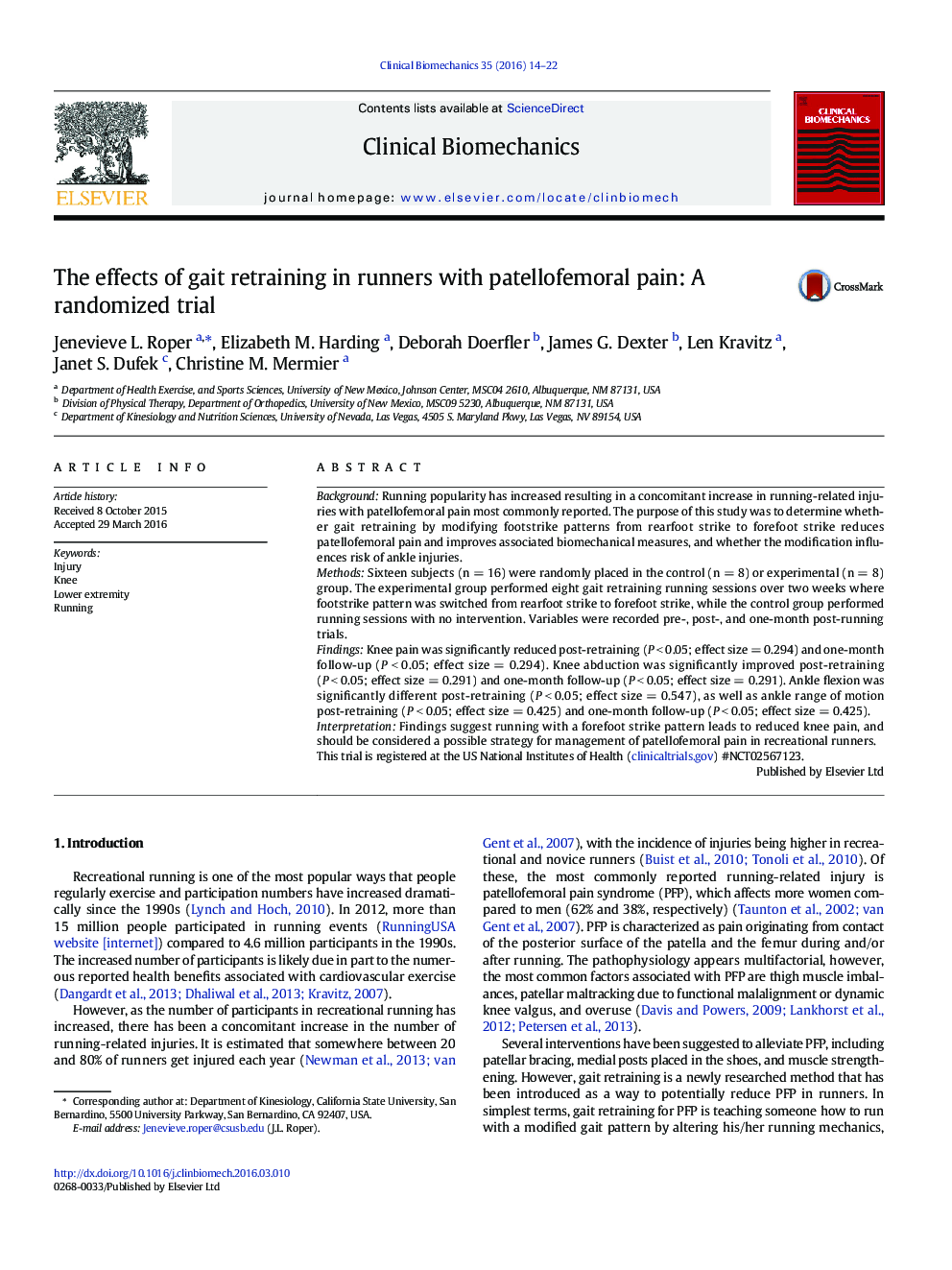| Article ID | Journal | Published Year | Pages | File Type |
|---|---|---|---|---|
| 4050103 | Clinical Biomechanics | 2016 | 9 Pages |
•A novel study examining gait retraining with emphasis on footstrike pattern•Recreational runners were retrained to run using a forefoot strike running pattern.•As a result, there was a significant decrease in knee abduction.•Switching to a forefoot strike pattern reduced reported patellofemoral pain.•Patellofemoral pain was reduced by four on the VAS, and persisted at follow-up.
BackgroundRunning popularity has increased resulting in a concomitant increase in running-related injuries with patellofemoral pain most commonly reported. The purpose of this study was to determine whether gait retraining by modifying footstrike patterns from rearfoot strike to forefoot strike reduces patellofemoral pain and improves associated biomechanical measures, and whether the modification influences risk of ankle injuries.MethodsSixteen subjects (n = 16) were randomly placed in the control (n = 8) or experimental (n = 8) group. The experimental group performed eight gait retraining running sessions over two weeks where footstrike pattern was switched from rearfoot strike to forefoot strike, while the control group performed running sessions with no intervention. Variables were recorded pre-, post-, and one-month post-running trials.FindingsKnee pain was significantly reduced post-retraining (P < 0.05; effect size = 0.294) and one-month follow-up (P < 0.05; effect size = 0.294). Knee abduction was significantly improved post-retraining (P < 0.05; effect size = 0.291) and one-month follow-up (P < 0.05; effect size = 0.291). Ankle flexion was significantly different post-retraining (P < 0.05; effect size = 0.547), as well as ankle range of motion post-retraining (P < 0.05; effect size = 0.425) and one-month follow-up (P < 0.05; effect size = 0.425).InterpretationFindings suggest running with a forefoot strike pattern leads to reduced knee pain, and should be considered a possible strategy for management of patellofemoral pain in recreational runners.This trial is registered at the US National Institutes of Health (clinicaltrials.gov) #NCT02567123.
